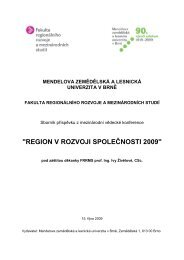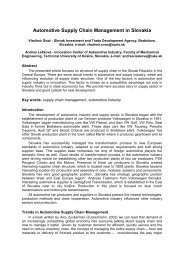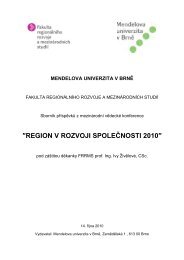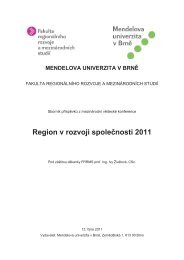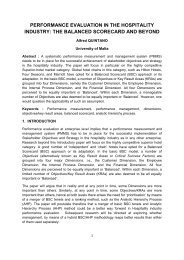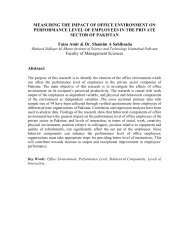Accounting for Intangible Assets and Reporting ... - Icabr.com
Accounting for Intangible Assets and Reporting ... - Icabr.com
Accounting for Intangible Assets and Reporting ... - Icabr.com
You also want an ePaper? Increase the reach of your titles
YUMPU automatically turns print PDFs into web optimized ePapers that Google loves.
Sullivan (2000, p. 228) submits a working definition of intellectual capita in the followingwording: “…knowledge that can be converted into profit“. In his opinion intellectualcapital consists of two <strong>com</strong>ponents - human capital <strong>and</strong> intellectual assets.Baruch Lev in his famous work “<strong>Intangible</strong>s – Management, Measurement <strong>and</strong><strong>Reporting</strong>” of 2000 states on page 5: “An intangible asset is a claim to future benefitsthat does not have a physical or financial embodiment. A patent, a br<strong>and</strong>, <strong>and</strong> a uniqueorganizational structure (<strong>for</strong> example, an Internet-based supply chain) that generate costsavings are intangible assets“.According to Sweiby (1997, p. 18) “the difference between the marked value of apublicly held <strong>com</strong>pany <strong>and</strong> its official net book value is the value of its intangible assets.In most <strong>com</strong>panies, the value of intagible assets exceeds the value of tangible assets.”<strong>Intangible</strong> assets are also often defined by a list of their assumed properties, byclassification or sorting, which I will deal with in the following part of my article.Like in the case of the basic terms <strong>and</strong> definitions the authors of publications about IA/IChave not yet reached too much agreement about their sorting, classification orcategorisation. All classifications in effect remain very abstract, thus not offering a realinstrument <strong>for</strong> management <strong>and</strong> use of the intangible assets by corporate managers.A classification which – guessing from the number of quotations – has more significantlyinfluenced other researchers was published in 1997 by L. Edvinsson. This classificationis the simplest, <strong>and</strong> only consists of two basic categories: Human capital <strong>and</strong>Organisational, or Structural capital. Some publications do not provide any classificationat all, or state that a classification would be very difficult.Other authors, with Sweiby, 1997, being one of the most often mentioned <strong>and</strong> quoted,divide intangible assets to three basic groups or levels: employee <strong>com</strong>petence, internalstructure <strong>and</strong> external structure. Studies analysing publications on intangible assetsmostly deal with works by American <strong>and</strong> Western European authors.There are also two more detailed <strong>and</strong> more specified classifications, which are quiteexceptional in this area:• The first is the basic categorisation developed by the American Financial<strong>Accounting</strong> St<strong>and</strong>ard Board <strong>for</strong> the purpose of accounting reporting <strong>and</strong> alreadymentioned in the first part of the article, in the section on the accountingstatement systems. This categorisation distinguishes seven basic categories ofintangible assets based on: technologies, customers, market, employees,contracts, organisation <strong>and</strong> <strong>com</strong>pany status,• The second classification by the German working group investigating intangibleassets in accounting <strong>for</strong> Schmalebach Society includes human, customer,supplier, investment, process, allocation <strong>and</strong> innovation capital (Kaufmann,Schneider, 2004).2.2 Approaches to Appreciation <strong>and</strong> <strong>Reporting</strong> of <strong>Intangible</strong> <strong>Assets</strong> <strong>and</strong>Intellectual CapitalThe wide definition of the basic terms <strong>and</strong> classification shows the large variability in theopinions of researchers on appreciation <strong>and</strong> reporting of intangible assets. A survey firstpublished in 1997 by Sweiby <strong>and</strong> several times updated uses the essential classificationinto four basic groups.Survey of types of appreciations of intangible assets:• Direct Intellectual Capital methods (DIC) are based on the assumption that weare able to recognise the individual basic <strong>com</strong>ponents which are then not difficultto appreciate individually or in aggregate,




